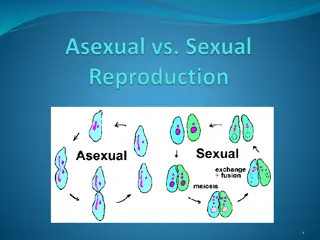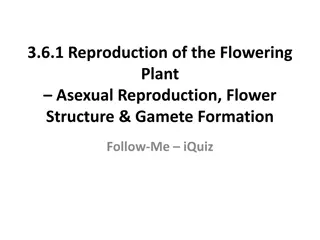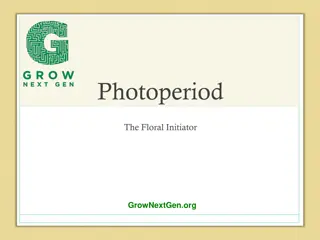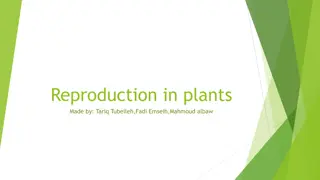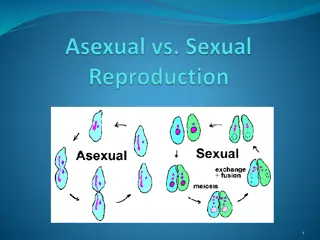Asexual Reproduction in Plants: Methods and Examples
Asexual reproduction in plants, also known as vegetative propagation, involves various methods such as tubers, bulbs, and runners. It allows plants to reproduce without the involvement of sex cells and fertilization, resulting in genetically identical offspring. Artificial propagation techniques like taking cuttings and grafting are also used for cultivating plants. This process has commercial benefits and helps in adapting and improving plants for human use.
Uploaded on Sep 16, 2024 | 0 Views
Download Presentation

Please find below an Image/Link to download the presentation.
The content on the website is provided AS IS for your information and personal use only. It may not be sold, licensed, or shared on other websites without obtaining consent from the author. Download presentation by click this link. If you encounter any issues during the download, it is possible that the publisher has removed the file from their server.
E N D
Presentation Transcript
Asexual Reproduction World of Plants Standard Grade Biology
Sexual Reproduction Asexual Reproduction Definition Involves sex cells and fertilisation Does not involve sex cells and fertilisation Only one parent plant Advantages/ Disadvantages Offspring are not genetically identical to one another Offspring have no variation Offspring are genetically identical to one another There is variation in the offspring
Asexual reproduction Also known as vegetative propagation 3 methods of vegetative propagtaion -tubers -bulbs -runners
Tubers Tubers are underground food stores which stores food over the winter and provides a new plant with food until it can make its own. Examples: potato, artichoke, yam, cassava, water chestnut, arrowroot Taro- Japanese potato Food made by the new plant is sent to make new tubers. Thereby reproducing itself.
Bulbs E.g. daffodils, lilies
Runners Runners are side shoots which grow out from the parent plant. Buds form at points along the runner and eventually these buds form roots and grow into new plants. Examples: spider plant (Anthericum), strawberry (Fragaria x ananassa)
Artificial Propagation 2 methods used to cultivate plants asexually -taking cuttings -grafting
Cutting Cuttings are small pieces of stem with some leaves attached, the new plant grows from this. They can be placed in moist soil or water (and sometimes dipped in rooting powder).
Grafting A cut stem of one plant (with good flower or fruit growth) (the graft) is taken and firmly attached to the rootstock of another plant (which has a strong, established root system) (the stock). Examples- roses, fruit trees
Commercial aspects Artificial propagation has allowed us to adapt and improve plants for our own use. Some of the benefits include: Quick production of large numbers of genetically identical plants. Specific varieties, desired features or consistent quality can be produced especially in fruit, flowers.
This powerpoint was kindly donated to www.worldofteaching.com http://www.worldofteaching.com is home to over a thousand powerpoints submitted by teachers. This is a completely free site and requires no registration. Please visit and I hope it will help in your teaching.





